Walgreens Android Apps Encryption Flaw
Installing the App
Here's the app I installed, from Google Play.

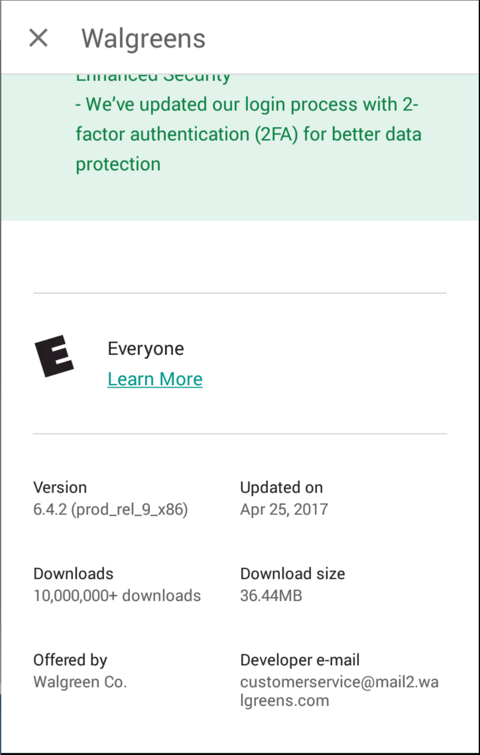
I logged in to a test account, and approved the
app's saving my password.
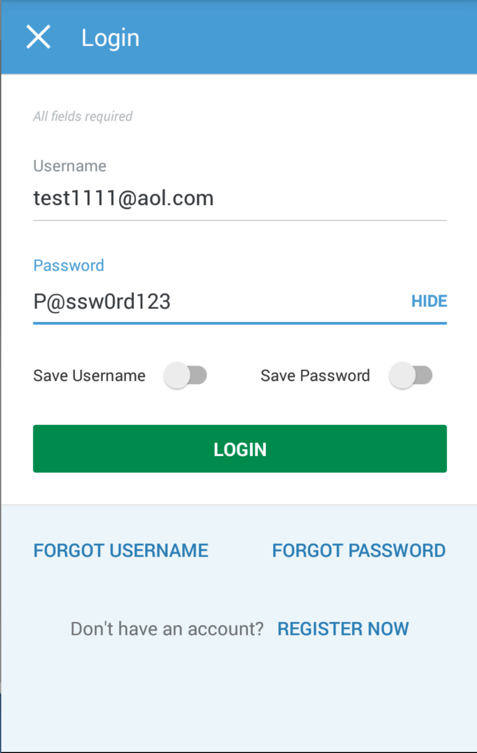
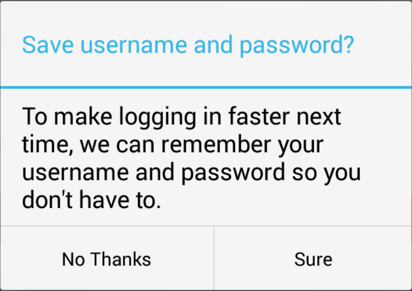
Viewing the Locally Stored Password
Using Android Debug Bridge, I connected to the
phone and retrieved the locally stored credentials
as shown below.

The credentials are stored in an encrypted
form.
Analysis and Recommendations
At this point, the likely conclusion is
clear: the Walgreens app is insecure,
because it stores the password on the
phone using custom encryption.
As discussed
here, passwords should
not be stored on the phone at all.
Because users re-use passwords,
they are very sensitive information
and handling them carelessly is a
disservice to your customers.
Locally stored passwords could be stolen
by malware on the phone, or by simply
stealing the phone itself.
Instead, a random cookie should be
stored on the phone, which is useless
at any company other than Walgreens.
This is the #2 most important security
vunerability on mobile devices,
according to OWASP.
If a developer is forced to store
a password locally, there are far
better options, such as the Android
Keystore. The Android Keystore
can be breached on a rooted phone,
so the app should test for this, and refuse to
run on a rooted phone.
Curiously, the Walgreens app actually
does use the Android Keystore, but
not for storing the encryption key
used to encrypt user data.
The remainder of this page merely
proves this simple point by explicitly
reverse-engineering the encryption
used by Walgreens, and using
Python to decrypt
the password.
The Walgreens Encryption Key
The Walgreens userdata encryption key
is always the same. It is calculated from
a seed, which is hard-coded in the app
in three places:
./res/values/strings.xml: phW5854acbc576=
./res/values/strings.xml: phW5854acbc576=
./smali_classes5/com/walgreens/quickprint/sdk/html5/c.smali: const-string/jumbo v0, "phW5854acbc576="
The actual encryption key is calculated from that
seed using PBKDF2, as shown below.

Decrypting the Data
Decrypting the stored data
requires only a few lines of
Python, as shown below.
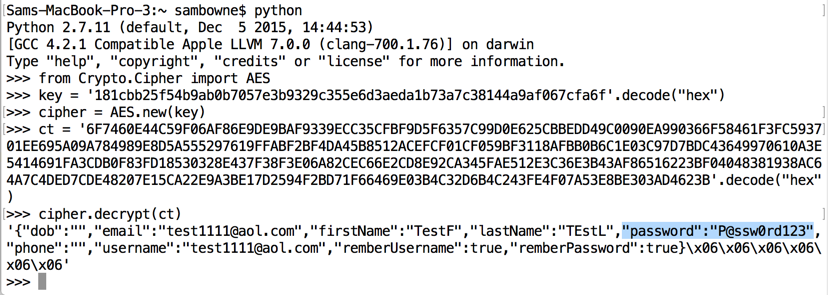
Developer Notification
I notified the developer of this problem
on 5-3-17, as shown below.
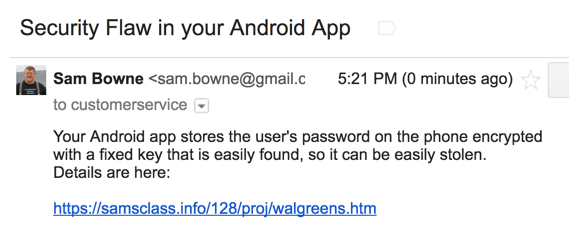
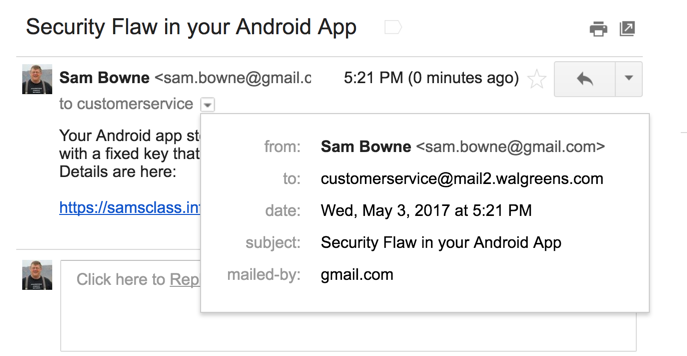
Retest on June 20, 2017
I tested this version:
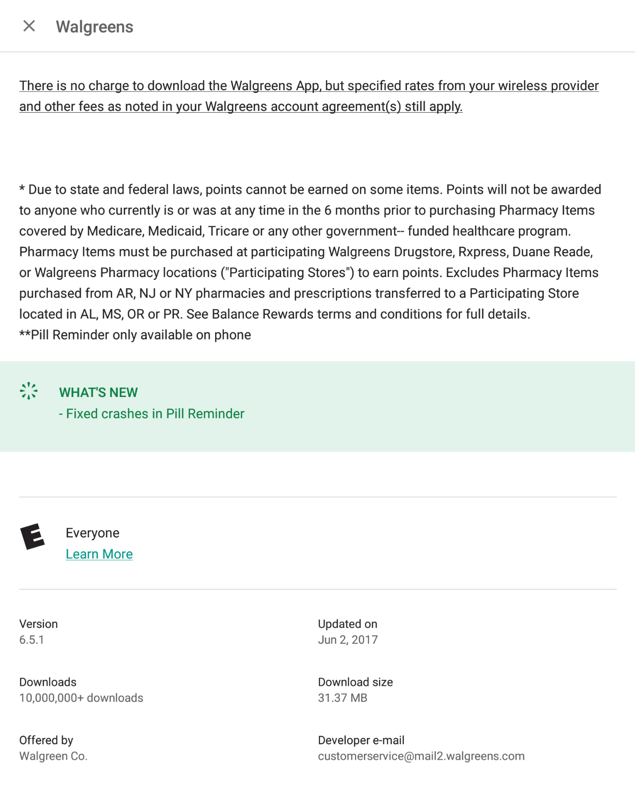
Nothing had changed; the password is stored
the same way:

And it decrypts the same way:

Retest 7-28-17
I tested the newest version and it still has
the same vulnerability.
Posted 5-3-17 by Sam Bowne
Updated 6-20-17
Updated 7-28-17













